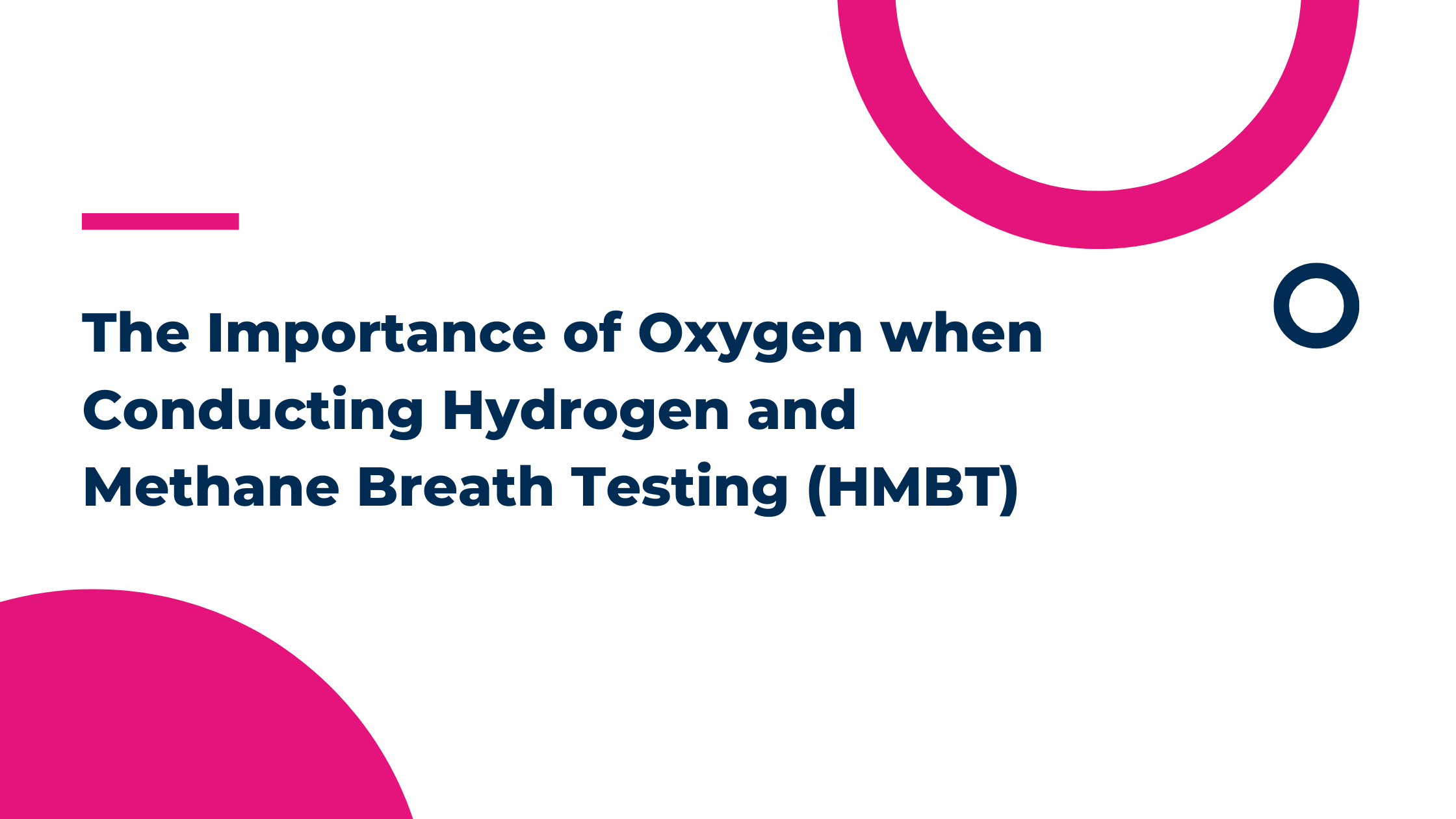
Gastrointestinal disorders such as carbohydrate malabsorption and lactose intolerance can be diagnosed with the aid of hydrogen (H2) and methane (CH4) breath testing (HMBT). Bedfont® Scientific Limited manufacture the GastroCH4ECK® device which measures H2, CH4, and Oxygen (O2). Unlike other HMBT devices which measure carbon dioxide (CO2), the GastroCH4ECK® device measures O2 as it is a quality indicator for the breath sample1.
What is the role of O2 in HMBT:
When a patient comes in for a HMBT test, after recording their baseline results, the patient will digest a specific substrate which is metabolised by the bacteria in the small intestine which will start producing H2 and/or CH4 gas. H2, CH4, and O2 will then be monitored in intervals; the O2 measurement is important because it helps to ensure that the bacteria in the large intestine, rather than those in the mouth or stomach, are responsible for any gas production observed during the test.
The science behind O2 being measured:
The Earth’s atmosphere consists of around 78% nitrogen (N2), 20.9% O2, 0.93% argon (Ar), CO2 0.03%; with the rest being various gases2. When you breathe in, your body converts a percentage of O2 into CO2, which settles at the base of the lungs, known as an end-tidal sample. During HMBT, if the levels of O2 exceed 14%, it indicates that an end-tidal sample has not been achieved, likely due to dilution by dead space in the upper airway. In such cases, the GastroCH4ECK® device compensates for this discrepancy with a correction ratio which will be displayed onscreen.
The earliest use of recorded modern HMBT was in the 1970s, with the rationale that defined CO2 concentration of an end-tidal breath as 5% was published in the same decade3. Eventually, the O2 concentration measurement was adopted, and the O2 end-tidal breath was 14%. When completing a breath test with the GastroCH4ECK® device, an on-screen dial will help to guide the exhalation rate; keep the arrow pointing in the green section of this indicator throughout the test. The arrow will change colour as the O2 level in the breath sample reduces to the target 15%, at which point it will turn green and the test will automatically stop after 3 seconds. Once the test is completed, the final results will be shown onscreen H2 and CH4 measured in parts per million (ppm). The final results for the O2 percentage and correction factor have a visual indicator to help interpret results displayed as a traffic light system.
Quality of measuring O2:
The quality of measuring O2 in an HMBT is crucial for accurately assessing functions, especially related to gastrointestinal health. Standardised testing protocols help ensure uniformity across the different testing facilities. Consistent protocols for fasting duration, substrate administration, and sampling intervals will help enhance the reliability and comparability of test results. Regular calibration is necessary to maintain accuracy, ensuring that measurement devices function and provide results correctly.
In summary, the measurement of O2 for HMBT is crucial because it ensures the accuracy and reliability of the results. O2 levels can influence the production of H2 and CH4 in the gut, and impact the test results and treatment. Healthcare professionals can obtain more precise measurements, leading to better diagnosis and management of gastrointestinal conditions like small intestinal bacterial overgrowth (SIBO) and improving patient outcomes.
Testing:
Bedfont® manufactures the Gastrolyzer® range of non-invasive breath testing devices that help to detect gastrointestinal disorders, one breath at a time. The Gastrolyzer® range consists of the Gastro+™ which measures H2 and the GastroCH4ECK device which measures H2, CH4, and O2; both devices provide instant results recorded in ppm. To find out more about how you can support your patients with gastrointestinal disorders with the Gastrolyzer® range, visit https://www.gastrolyzer.com/.
References:
1. Lee SM, Falconer IH, Madden T, and Laidler PO. Characteristics of oxygen concentration and the role of correction factor in real-time GI breath test. BMJ Open Gastroenterology. 2021 Jun 1;8(1):e000640. DOI:10.1136/bmjgast-2021-000640.
2. The atmosphere [Internet]. National Oceanic and Atmospheric Administration. [Cited 19th April 2024]. Available from: https://www.noaa.gov/jetstream/atmosphere
3. Niu HC, Schoeller DA, Klein PD. Improved gas chromatographic quantitation of breath hydrogen by normalization to respiratory carbon dioxide. The Journal of laboratory and clinical medicine. 1979 Nov 1;94(5):755-63. PMID: 501202.
4. Wolfson MR, Shaffer TH. Cardiopulmonary physical therapy. Fourth Edition, 2004.
